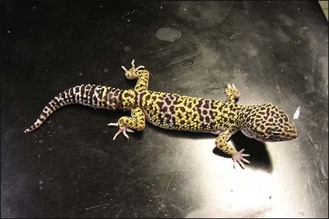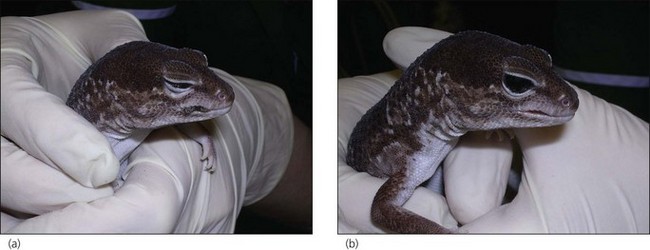20 Dysecdysis in a leopard gecko
Introduction
CASE PRESENTING SIGNS
A 3-year-old male leopard gecko (Eublepharis macularius) (Box 20.1) presented with retained skin after shedding (i.e. dysecdysis), which involved the digits, eyes and lips.
BOX 20.1 Ecology of leopard geckos
Husbandry
The leopard gecko was housed with a con-specific in a Perspex enclosure measuring approximately 60 cm long × 30 cm wide × 30 cm high, with a ventilated lid. The substrate – calcium sand – was spot-cleaned daily and completely replaced every 3 months, at which point the vivarium was disinfected with dilute bleach and rinsed with tap water. Supplemental heating was provided by a heat mat along the back wall on the outside of the tank and a small ceramic heat bulb at one end. The heat mat was switched on 24 hours per day, while the lamp was on for approximately 10 hours each day. A UV light was provided, but switched on for only 6 hours daily (Fig. 20.1). A plastic mould provided a hide area.
Case History
The owner had noticed problems with the animal’s skin over the previous week, since the last shed:






